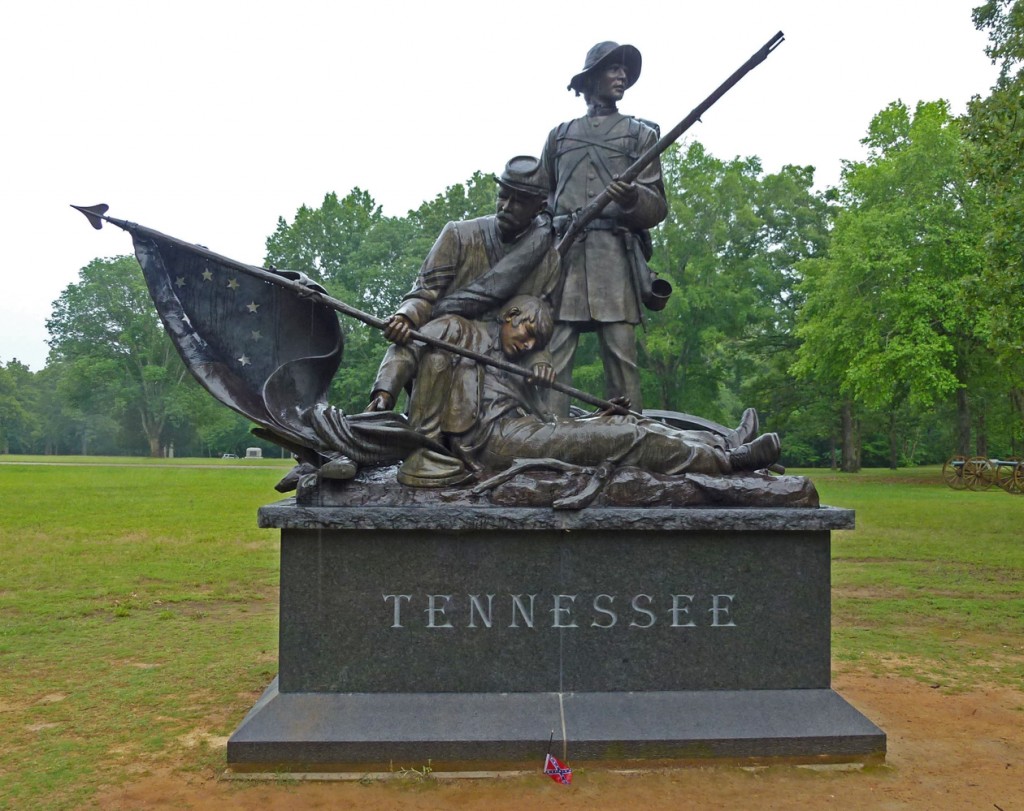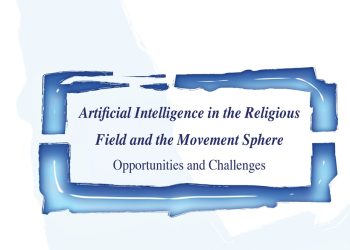by Adam Garfinkle
It’s a pity that sometimes the best solution to a political conflict is simply not practical. There is such a solution to the Confederates monuments conflict roiling the United States right now, but there is zero chance of its being agreed to and implemented. What is this best but impossible solution? It’s simple: Take down all the Civil War military monuments in public spaces. That’s right, all of them—Grant and Sherman as well as Lee and Forrest—and move them, if we must, to teachable-moments museum or parks settings. Never happen; impossible.
Were it up to me, truth to tell, I’d remove all statues of human forms from American public spaces. That certainly includes non-military Confederate and Union Civil War-related statuary, and it includes Mt. Rushmore (of which more below) and the Lincoln statue inside the Lincoln Memorial, by far the most Pharaonic of all the Mall sculptures. Large animal sculptures, too, like Salem Sue, the world’s largest (fake) Holstein cow, in New Salem, North Dakota, would go as well. (Obelisks and other abstract sculptures designed as monuments to great men and women we can debate.)
Why? Because these are all idols, graven images, and they are for good reasons forbidden in the Ten Commandments and in subsequent Jewish and Islamic religious law. As should by now have become obvious, Americans ignore this commandment at their peril.
Of course, this latter, more expansive proposal amounts to impossibility squared. But if I propose the impossible to start with, there’s no reason to hesitate about proposing the even more impossible—since logically that’s not possible, right?
What’s behind my thinking? Two arguments, one specific to the Confederate monuments controversy (and its historical backdrop) that justifies the merely impossible, and one more general that justifies the completely impossible. Let’s take them in turn, the latter in more detail as befits a distant audience, most of whom are probably reading in Arabic.
* * *
What’s happening in the United States over the Confederate monuments business may seem perplexing to foreigners, but it’s really quite simple.
Most Americans have a two-dimensional, passion-play inflected contemporary understanding of the historical background to the Confederate monuments controversy—namely the Civil War—that is much clearer than the actual, raw truth. And there is behind the recent megaphoning of this two-dimensional narrative an effort, now many decades old, by some on the radical left fringe of the American adversary culture to demonize the American Founding itself.
Now, very few of those who find the Confederate military statues distasteful share this objective. But they are useful to those radical activists who do avow it. The same is true on the other side of the argument: Few of those who take offense at the caricaturing of the American South, past and present, are neo-Nazis or white supremacists, but neo-Nazis and white supremacists find these offended souls useful. In short, we have a dialectic of polarization playing out before us, where tiny radical groups aim to politically weaponize larger numbers of more or less normal patriotic Americans into unwittingly serving a radical cause.
One result of this dialectic is the mutual exaggeration of how large and powerful these fringe groups actually are, an exaggeration that gets passed on by the media to the nation at large. This sort of thing can easily get out of hand, especially at a time when the President cares only about nurturing his personal base and not a fig about what is best for the nation.
The solution is to get rid of all the Civil War military monuments from public spaces. One Civil War was enough; we don’t need another one. But if extremists left and right go competitively exhuming a still-infested historical pit, we invite
the revenant of an old and bitter rawness into our lives, and the possible re-militarization of our politics with it. We need to mitigate the looming repolarization of race and racial politics America after more than half a century of incomplete but hardly trivial progress, not feed it. So all the Civil War statues must go.
* * *
But wait, you may ask: If Christians accept the Hebrew Bible and the Ten Commandments, and since America was and remains essentially a majority-Christian society, then what are all these statues doing in America’s midst in the first place? Exodus 20: 4-5 says: “You shall not make for yourself a sculptured image, or any likeness of what is in the heavens above or the earth below, or in the waters under the earth. You shall not bow down to them or serve them, for I the Lord your God am a jealous God. . . . “ And didn’t Matthew say (5:18): “For verily I say unto you, Till heaven and earth pass, one jot or one tittle shall in no wise pass from the law, till all be fulfilled.” Yet this very Protestant Christian society ignored all that. Why?
Alas, the Abrahamic inheritance of Western and American civilization via Christianity is only part of its sources, the other main part being largely Greco-Roman. You can see this vividly just by reviewing what books lined the shelves in the libraries of the American Founders: the Bible in English translation and related literature, and the works of the classical era in Greek and Latin for those well enough educated to read them in the original. People like to argue about the balance between the West’s Hebraic and Hellenic influences, but when it comes to the visual arts there is no contest: The Hebrews were anti-iconographic for theological reasons, and the Greeks were brilliant at that sort of thing. Compare what we know of the two cultures’ 4th-century BCE sculpture, painting, architecture, theater/dance and there is, well, no comparison.
Western civilization managed to fuse ancient Hebraic and Hellenic elements into a creative whole, using the tension between the elements to forge a new synthesis. But the tensions were real. They are summed up in two simple, related contrasts. The Greeks thought that what was beautiful was holy, and the Hebrews thought that what was holy was beautiful. The Greeks saw beauty, but the Hebrews heard holiness, so that the Greeks were drawn to images, the Hebrews to words.
But why the absolute prohibition on life-form copying statuary and graven images that the Jews and, after them, the Muslims (and in recent times among Muslims especially the Wahhabis) have taken so seriously?
In both cases, the prohibition falls into a general category. In Judaism the category is called “avodah zarah,” which translates literally as “strange service” but which is in turn a euphemism for idol worship. In Islam the general category is shirk, which refers to idolatry or polytheism, and comes from the root “to share.” The vocabularies differ but the underlying concept is similar: The Hebrew Bible describes God in His own words as “el kanah,” the jealous God, and the idea of sharing worship among more than one god implies the same basic notion—that any diminution of God’s unity is heretical, and that any attempt to materially represent the deity involves by definition such a diminution.
Thousands of pages of commentary developed over many centuries in both Judaism and Islam expound on elements of this theme. They share much in common. To sharply summarize, four simple points are key.
First, materializing the deity limits Him, freezes him; yet He cannot be limited or frozen. Seeking to do so is therefore a philosophical affront, magnified by the fact that a person can see an idol but not hear it—for as Psalm 135 says: “The idols of the nations are silver and gold; the work of men’s hands. They have mouths but they speak not.” As a sensory category error, an idol distracts from what people should be paying attention to: They should mainly be listening for holiness, not looking for it.
Second, creating an idol must be the work of human hands, leading to the temptation to believe that men possess power over God, for what they carve, etch, or draw they can change or destroy. This leads to the logical presumption that the priest-artisan is some kind of supernatural intermediary between humanity and the divine. If God is a unity and cannot be divided, there can be no such intermediaries among human kind. (Angels and djinns are another story, and not a human one.)
Third, and very much related, idolatry in Jewish and Muslim minds is associated with pre-monotheistic rites that often involved human sacrifice, and with it libations of wine. The danger this association points to is that an idolatrous priesthood can relegate to itself the power of life and death over other people, and do so even in a less-than-sober state of mind. Any presumption of absolutist human authority over others is unspeakably dangerous; that is Lord of the Flies territory.
Fourth, materializing the deity raises the danger of dualism, for if we grant that God can be materialized, perhaps simple folk will think that a separate, independent demonic force can be materialized, too. Other ancient Near Eastern religions were dualistic: Zoroastrianism, for example, posits Ahura Mazda as all good but Ahiman as all evil, the two dueling it out using earth as a platform. The Abrahamic tradition rejects dualism, instead problematizing the existence of evil within a moral framework that obliges human responsibility to recognize and overcome it. By opening a space for dualism, idolatry threatens the insistence on this responsibility.
In short, the anti-iconographic principle in Judaism and Islam is not a remnant of magic or superstition. It is about the theological principle of a unitary first cause, for in the absence of a unitary first cause the world need make no logical sense, and so cannot be a place where a person can hope to act purposefully. A universe brought into being somehow by random occurrences is suitable only for random and, at best, relativistic moral judgments.
But the anti-iconographic principle also teaches lessons of humility against arrogance and hubris, and lessons about necessary limits on human authority. It warns us against the dangers of bowing down not just to men and statues of men, but also bowing before false gods of many kinds: money, status, drugs, empty celebrity, and excessive self regard. Perhaps above all, it bears lessons about how to listen, to ourselves and to others.
* * *
Face up to it: When we Americans stand in front of that gigantic Daniel Chester French rendering of Lincoln, or when we look up at equestrian statues of military men on their pedestals, we are meant to feel a certain awe and even reverence. We are meant to sense the elision of a semi-deified memory with eternity. And most of us probably do; it is hard to avoid being carried by the emotion stimulated by the art. But no person is without shortcomings and it is dangerous to even elliptically suggest otherwise through an art form, for it may raise hopes beyond justification of human deliverance from trouble. It is no coincidence that the phrase “cult of personality” refers back to a heathen religious origin.
Larger-than-life artistic masterpieces fuse our wonderment over the artist’s skill with the subjects of that skill. When it is a military subject, even though the purpose of it may be to glorify courage, discipline, self-sacrifice, and camaraderie, it still often cannot help but to glorify war as well, and in some contexts to glorify one group of people at the expense of others.
In that light, finally, consider the aforementioned Mt. Rushmore monument: four idols of American nationalism set in the Black Hills of South Dakota, in the bosom of land sacred to the Lakota Sioux for ages before Columbus. Can we really grasp the full extent to which those idols add insult to the injury done to these people, those who are left of them? The insensitive arrogance of that idolatrous monument is, or ought to be, a badge of shame. It’s not a war memorial in a narrow sense, but the America state did not expand into the Black Hills and far beyond, all the way west to the Pacific Ocean, by peddling trinkets and apple seeds, now did it?
We should get rid of it; we should get rid of all of the idols standing in American public spaces, military and otherwise. Maybe if we Americans stop gawking at statues and monuments we’ll have more time to learn how to listen to each other, both among ourselves and between ourselves and others. Maybe then others would then be more willing to listen honestly to us, too—enough already with the conspiracy theories and childish devil fantasies about the United States that run rampant in the Arab and Muslim worlds. Now wouldn’t that be something? Eh….impossible?
The author is Editor of The American Interest.














